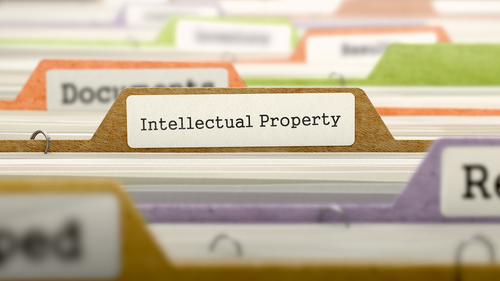Your business’s intellectual property is a valuable asset that is vital to protect. This means actively monitoring for its unauthorized use. If you discover possible infringement, you may wonder what you should do next.
Although exact plans of action will vary slightly based on the particular circumstances, there are three consistent steps to the process: evaluation, consultation and, finally, taking legal action.
Evaluation
To determine if infringement occurred, you must first determine if your material is protected by a copyright or a trademark.
A copyright is the exclusive legal right, given to an originator or an assignee, to print, publish, perform, film, or record literary, artistic, or musical material, and to authorize others to do the same.
A trademark is defined as a symbol, word, or words legally registered or established by use as a source identifier of a company or product.
One easy way to remember the difference is that a “trademark” typically identifies a product or service in trade or commerce, while a copyright usually refers to artistic material or literary works. Penguin Books USA, for instance, is a publisher of literary works. The company has registered their penguin logo as a trademark but obtains copyright registrations for the books they publish.
After your review your registered trademarks and copyrights, you must determine whether infringement has truly occurred.
Evaluating Copyright Infringement
Infringing upon a copyright involves copying materials originally created by someone else without authorization to do so.
In some cases, the use of the work may be allowed if it is considered “fair use”, which means it was used for a “transformative” and limited purpose, such as commentary, parody, news reporting, research, and education.
There are four main factors considered in this case.
- Purpose and character of the use. Was it used for commercial, nonprofit, or educational purposes?
- The nature of the copyright-protected work. Was the work factual or fictional?
- The amount and substantiality of the portion used in relation to the work as a whole. Was it just a small part of a larger work, or was the entire work copied?
- The effect of the use on the potential market for or value of the copyright-protected work. Will this use impact your ability to sell your work in the future?
Before taking any legal action, it is wise to notify the infringer that they are infringing on your copyright and telling them to immediately cease. You also need to make sure your work is registered with the U.S. Copyright Office.
It is important to note that obtaining a copyright registration before or within 5 years of publishing your work will help you in the event you need to bring a copyright infringement lawsuit in court. Your registration will satisfy a basic level of proof as to the validity of your copyright. You cannot sue for copyright infringement unless you have a registered copyright.
Evaluating Trademark Infringement
Trademark infringement occurs if someone else uses your trademark and consumers are likely to be confused as to the source of the products or services. There are four key questions that serve as a “litmus test” to confirm infringement.
Ask yourself:
- Are your materials properly protected? Trademarks used in interstate commerce should be registered with the U.S. Patent and Trademark Office. The cost is minimal, and having that registration is exponentially worth it when arguing a case.
- Is it likely consumers will confuse your products or services with the infringing party’s? A universal example of using the same trademark is Delta. The airline and the faucet company each use the brand name, spelled and pronounced exactly the same. Yet, a consumer is not likely searching the Delta faucet website for airline tickets – or accidentally purchasing airfare while visiting the home improvement store.
- What is the likelihood you will lose business to the infringing company? This one has historically been linked to location, but the rise of e-commerce has virtually eliminated physical geographic barriers. Consider whether a consumer would purchase the infringing company’s products over yours due specifically to the dual use of the mark.
- Can a judge reasonably consider similarities of “sight, sound, and meaning” between the two marks in question? They don’t need to be identical, but if the infringing party’s trademark use can cause confusion for consumers of those products and services there may be a case.
If any one of your answers to these questions leans toward yes, it may be time to consult a legal professional specializing in IP infringement.
